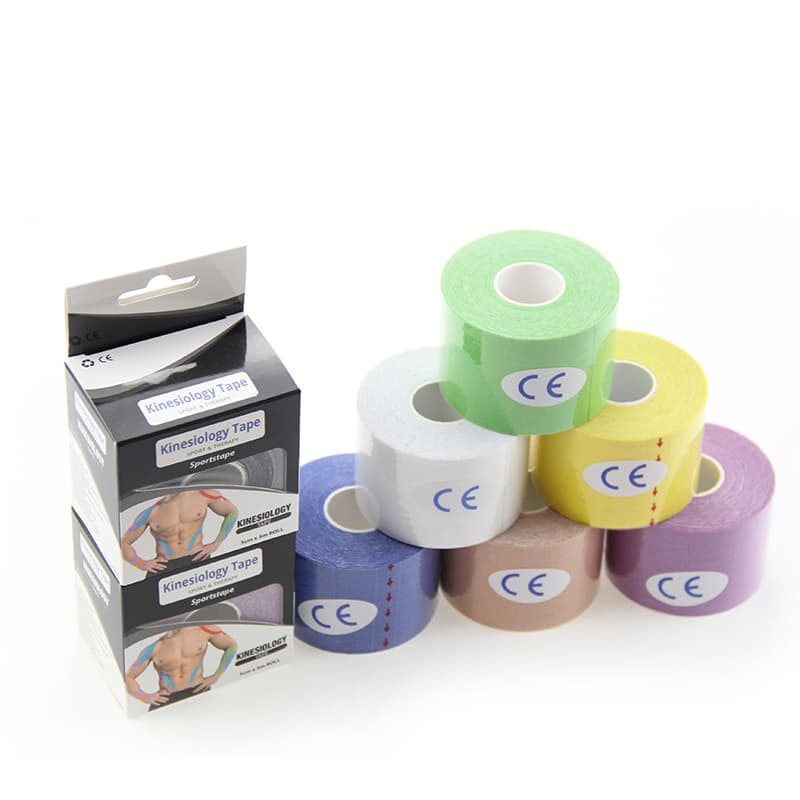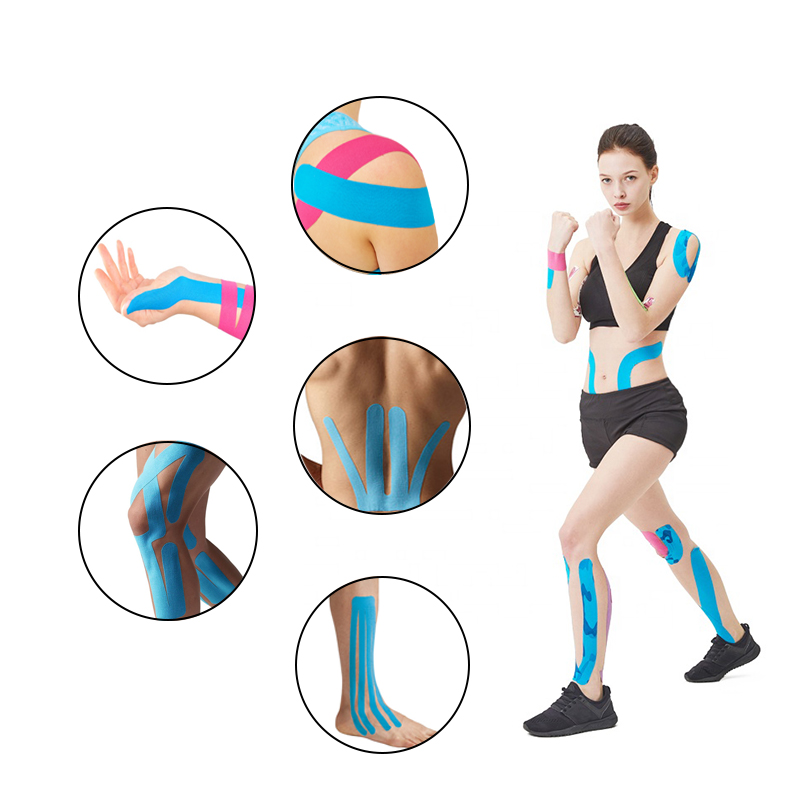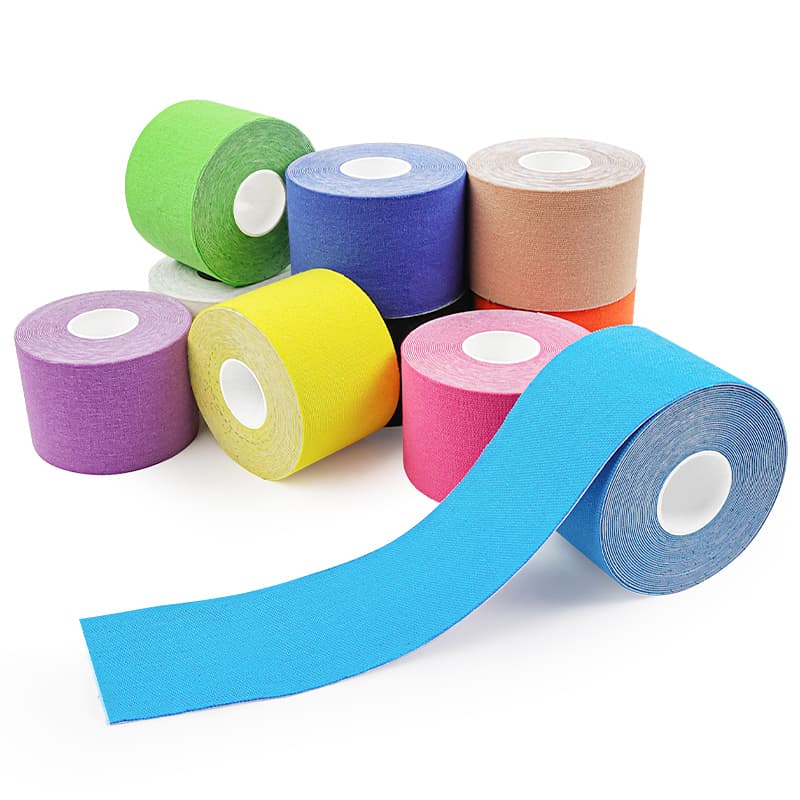Il calcio è uno sport emozionante e ad alta intensità, ma a volte gli infortuni sono inevitabili, anche per i giocatori più impegnati. In questo articolo, esploreremo alcuni comuni infortuni nel calcio e come Aupcon, un marchio affidabile di cerotti per lesioni, può fornire il sollievo e il supporto necessari per una rapida guarigione.

Lesioni comuni nel calcio e soluzioni con nastro adesivo Aupcon:
Shin Stecche
Questa dolorosa condizione provoca fastidio nella parte anteriore o posteriore della tibia, spesso a causa della pressione ripetuta sulla tibia e sui tessuti ad essa collegati. Il nastro per infortuni può aiutare i calciatori ad alleviare questo dolore fornendo un supporto mirato e riducendo lo stress sui muscoli interessati. Fare riferimento a come utilizzare il nastro kinesiologico per periostite tibiale.
Dolore al ginocchio
Il dolore al ginocchio è un problema comune per i giocatori di calcio e deriva da un uso eccessivo, da una tecnica impropria o da una condizione sottostante. Il nastro per infortuni può fornire stabilità, ridurre l'infiammazione e promuovere il corretto tracciamento delle articolazioni per alleviare il dolore e fornire supporto. Sfoglia il nostro nastro kinesiologico per ginocchio
Distorsioni della caviglia
Le distorsioni della caviglia sono comuni sul campo da calcio e possono causare instabilità e disagio. Il nastro per infortuni può cambiare le carte in tavola, fornendo un leggero supporto strutturale ai legamenti infortunati, migliorando la circolazione sanguigna e aiutando a ridurre il gonfiore per un recupero più rapido. Dai un'occhiata al nostro come usare il nastro alla caviglia
Ceppo del tendine del ginocchio
Accelerazioni e decelerazioni improvvise possono causare stiramenti ai muscoli posteriori della coscia, che rappresentano un grave ostacolo per i calciatori. Il nastro per infortuni può aiutare a gestire gli stiramenti ai muscoli posteriori della coscia fornendo supporto alle fibre muscolari infortunate, migliorando il flusso sanguigno e supportandoti durante il recupero. Consulta il nostro articolo su come applicare il nastro kinesiologico sui muscoli posteriori della coscia.
Lesioni all'inguine
Rapidi cambi di direzione e violenti movimenti laterali possono causare lesioni all'inguine caratterizzate da dolore nella parte interna della coscia. Il nastro per lesioni può fornire un supporto mirato all'area inguinale, riducendo lo stress muscolare e favorendo un recupero più fluido.
Abrasioni al braccio
Le abrasioni al braccio, chiamate anche ustioni del tappeto erboso, sono rotture della pelle causate da un impatto violento quando un giocatore di football cade. Le abrasioni al braccio possono essere prevenute avvolgendo un nastro erboso di 10 cm attorno al braccio. È anche noto come nastro per tappeto erboso o Nastro kinesiologico da 4 pollici.
Allora, cos'è il nastro per lesioni?
Viene anche chiamato nastro per lesioni nastro kinesiologico in cotone o nastro muscolare. È più comunemente utilizzato nei centri di fisioterapia, nelle squadre sportive e nelle squadre di atletica leggera.


Contatta il produttore di nastri per kinesiologia.
Nastro kinesiologico è un cerotto elastico che ha gradualmente guadagnato attenzione nella pratica clinica in Europa e negli Stati Uniti negli ultimi anni. Non è medicinale come i cerotti tradizionali cinesi o i teli medicati, quindi è meno probabile che causi allergie cutanee o disadattamento.
L'effetto più magico di nastro kinesiologico deriva dal suo design con tensione ed elasticità. Che si tratti del "tessuto" sullo strato superiore del cerotto stesso o della "colla" sullo strato inferiore che si attacca alla pelle, sono progettati secondo la biomeccanica e i meccanismi fisiologici. Pertanto, la qualità ha un grande impatto sull'effetto del trattamento.
Oltre al nastro adesivo stesso, il fattore più critico che determina l'effetto del trattamento è l'esperienza e le capacità del terapista. Lo stesso rotolo di nastro adesivo può sembrare simile anche se fasciato nello stesso modo. Tuttavia, l'effetto del trattamento può differire in modo significativo dalla “progettazione” e dalla “personalizzazione” del taping in base ai sintomi di altri pazienti. I terapisti devono considerare i concetti e le tecniche generali di trattamento del tessuto della fascia sottocutanea, del tessuto muscolare, delle articolazioni, della circolazione sanguigna e linfatica, del tessuto nervoso, ecc., per esercitare il magico effetto terapeutico del nastro per lesioni.
Prova a farti aiutare da medici professionisti di medicina sportiva e riabilitazione con il taping o a farlo sotto la loro guida (come usare il nastro kinesiologico). Prima di applicare il nastro, la zona da applicare deve essere pulita, tenuta a temperatura ambiente e asciutta, quindi il nastro per lesioni viene applicato direttamente sulla pelle. Quando si applica il nastro, la tenuta deve essere moderata e il nastro deve essere applicato lungo la direzione del muscolo infortunato e la struttura anatomica sportiva della parte specifica.



